The Menace of Illegal Mining in Ghana: Challenges & Resolution by Rev. Joyce R. Aryee
Without doubt the threat and the consequences of the activities of illegal mining (emphasis on illegal) has continued to stare in the face of the country for over more than two decades. Once again the pressure is now on to find solutions and to resolve this challenge entirely. The fact is that, this is not the first attempt at resolving the problem, and because we are discussing it again means that, the previous attempt did not work and therefore we need another strategy on a sustainable manner to find and execute permanent solutions to curb this canker once and for all.
It is also an established fact that everything we depend on is either made from minerals or relies on minerals and mining for its production. It is thus important, realizing the inevitability of mining, to find ways of exploiting the positive impact of mining to the fullest, so as to reduce its negative impact to the barest minimum or even to make the negative impact insignificant altogether in the country.
I will be the first to admit that in some parts of the world especially in Africa and Ghana specifically, when it comes to the discussions on the economic benefits or even the potential of mining to stimulate sustainable development, passions are inflamed, and various sentiments are awakened. What such passions fail to analyze is that it was due to the effect of our political system and mismanagement of the economic interface of mining to development that have created and nurtured some of these passions. Colonialism for instance created hatred for mining as an economic venture, basically because the colonized did not benefit from the impact of the exploited mineral resources. Subsequent managers of the nation have not really appreciated the inevitable nature of mining to development generally and, therefore have not strategized well to use mining and mining resources and activities as the propeller of sustainable development for the benefit of all. The effect is the overconcentration on Gold especially and other few minerals to the neglect of the other very viable industrial mineral resources.
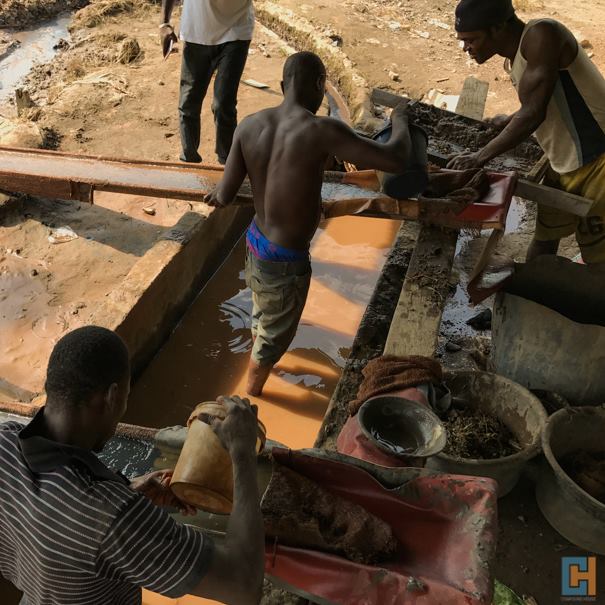
Needless to say that, few people have enjoyed the benefits of mining, while the remaining majority would either dismiss mining al-together and see at as a negative venture. I am making this point because, with the campaign against the illegal activities of few miners in the mining of one mineral (Gold), some activist against mining may use this excuse to dismiss the importance of mining to development.
Our failure to diversify, explore and exploit the potential of our other resources and expansion of economic activity in the rural areas has led to a widespread lack of economic development in our rural areas and thus have made rural dwellers vulnerable to illegalities. This is especially evident in the indiscriminate development and proliferation of illegal mining in the rural areas of the country. They see and hear the value of minerals mined in their area and yet they do not benefit from it, so any lure, no matter how insignificant or pitiable, they may fall prey to the influences. The new government’s focus on improving the economy and industrialization is, therefore, a positive indication for the diversification and development of the mining sector because it creates an opportunity for other minerals to be strategically enrolled in, to bring about sustainable development. It must also target mining areas especially to provide livelihood where agricultural activities have been disrupted because mining.
This above commentary does not in any form justify the activities of illegal mining. It rather should help us recognise that, the initiative to fight the canker must be tackled from an approach that is sound systemic, strategic and sustainable.
To do this, we as a nation must understand the gravity of the problem by tracing its roots, how it spread, the people involved, the consequences and how we got to where we are today. The solutions are inherit in understanding the problem and taking a holistic approach to tackling it.
In investigating and tracing the root of the problem some argue that small scale mining has remarkably enhanced the economies in the rural areas in a way that the conventional economic processes have not quite been able to do. Some say that it has created jobs and improved the livelihood in these areas, serving as an effective growth element for the secondary and tertiary segments of the rural economy. However its intended complementary role for other sectors of the economy has been misplaced. The rapid growth in technology to meet economy of scale in this enterprise has surpassed the rate of regulatory and technical control. This may have accelerated the influx of illegal miners into the sector.

Others argue that illegal mining (galamsey) is a rational countervailing response to poverty in the rural areas. Unfortunately the argument is not sustainable because, the negative effects of the pollution of water bodies , accelerated depletion of forest reserves, destruction of arable lands, de-motivation of farmers, loss of lives, tax evasion, increase in criminal activity, prostitution, accelerated use of drugs by the youth, teenage pregnancy and so forth far outweighs the economic benefits as professed. Instead, it rather creates foundations for increase in poverty over the long term. The gory pictures of pollution and destruction of our water bodies, vegetation and farms is enough evidence. Indeed it must be treated as a crisis if we are serious about our quest to develop in sustainable manner.
Again the main gainers in the canker have been identified to include, politicians, traditional authorities, businessmen, security personnel and some foreigners. Here, we must be careful about the overconcentration or the easy reference to Chinese involvement in the menace. Although their participation may have heightened the sophistication of the equipment being used in the activities of these operators, we must recognise that other nationals especially from the sub-region are involved in the illegal activity and therefore we may need a regional approach to tackle it. Understanding the people involved at the top level exposes the fact that we have a major challenge.
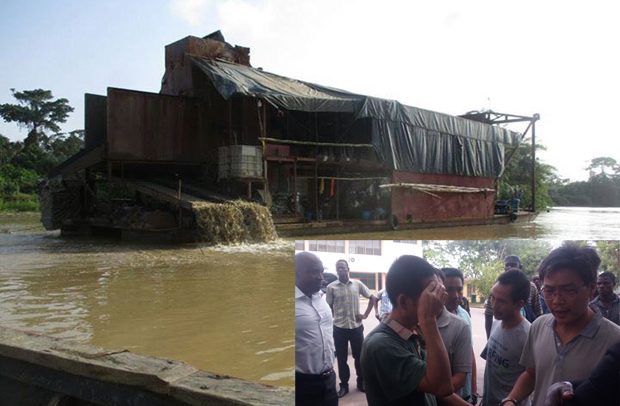
From the above, we must therefore adopt a short-term approach (which will help to stop the operations and stabilise the situation of the continuous destruction to our water bodies and forest reserves, involve the youth in short term economic activity in other not to create a pool of bereft youth susceptible to crime and violence on the society. Officially Artisanal mining accounts for about 35% (this could be 50%) of the country’s gold output, this makes it a very dicey decision to suspend/ban their activity. But for a sustainable arrest of the degraded environment we suspend and audit for repair of the environment. A suspension should also rally the licensed miners to assist in the fight against the illegal operators and them to also sanitize their operations.
Short to medium must also involve how to restore our water bodies and forest reserves, strengthening and enforcing our statutory and regulatory mechanisms.
Finally medium to long term must involve the diversification of the minerals industry to propel industrialisation and create sustainable wealth in the whole country especially in the rural areas.
- Practical short term measures would include:
The first action of issuing ultimatums is important and the very important action of establishing mining courts has been undertaken. The Chief Justice has constituted fourteen special courts to deal with mining related offences which is great news. Beyond that, let me repeat some of the measures already mentioned by the Minister for Lands and Natural Resources.
- We must treat illegal mining as a national security issue, so a rotational taskforce must be set up in all district where such illegal activities are on going to clamp down and arrest the recalcitrant ones who would not heed to the ultimate.
- They must be quickly arraigned before the special courts and sentenced heavily to serve as a deterrent.
- There should be a security base on the illegal mine site for the team of the taskforce to prevent the return of illegal miners.
- There must be a temporary ban on the issuance or renewal of all alluvial mining licenses in order to arrest the situation.
- Suspension all activities of Small Scale Mining operations for a reasonable period to allow for the sanitation of operations and rejuvenation and settlement of the water bodies. The nearly 5000 licences for small scale mining in the gold sector is too much.
- We must Conduct a baseline audit of all forest and water bodies (Do a thorough Chemical and physiological analysis)
- Conduct operational and environmental audit of all licensed Small Scale Mining operations.
- We must quickly review and bring up regulations and enforcement mechanisms to address the small scale sector effectively. This should include anti-corruption and law enforcement reforms, forestry provisions. i.e. Forestry Laws, Chieftaincy act and Police services act. Recognise Illegal mining as organised crime.
- Review the role and accountability of the district mining committee (DMC) i.e. District security heads in the illegal mining areas must be accountable to upholding environmental status so that they are held directly responsible and sanctioned for breaches not timely addressed.
- Set up regulatory bodies to provide technical design options for sustainable mining in the Small Scale sector
- Inspect and re-issue licenses where appropriate for ratification by the Legislature in consultation with independent mining experts.
- Use the Youth Employment agencies to provide jobs for the youth in illegal mining prone areas as we continue with the medium to long term diversification of the mining industry and industrialisation of country from the districts. I understand the Minister has prescribed planting of trees by the youth from these areas.
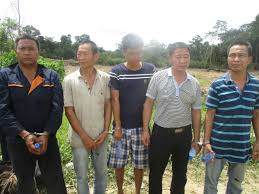
In the medium term
- Restructure the Minerals commission to be proactive and responsive technically to technological changes in the small scale sector.
- Set up environmental and extractive auditors across the districts in the country. These officers must rotated regularly as a matter of necessity or provision.
- Intensive stakeholder training and public education. We must make it a regional problem, put it as an agenda for the region thereby elicit support from the other countries in the sub-region. ECOWAS must be involved in the solution.
Some lessons from other parts of the world could be helpful as Illegal mining has grown to such vast proportions it is now a scourge comparable to the global drug trade, according to several newly published reports. This shadow industry is responsible for human rights abuses, large-scale environmental destruction and illicit revenue streams estimated to range from $12bn – $48bn according to the UNEP.
Globally the recommended approach is an integrated response which starts from the top and this is cannot be different from our situation. A top-down, bottom-up approach is needed. Government must lead the way (Security, Regulation, Planning and Research, Strategic Investment), and partner with corporate organisations, civil society and the media. The present campaign of media houses is impressive and must be sustained.
The highlights of a report by Livia Wagner Private Sector Advisor to the Global Initiative Against Organised Crime, identified that the tools to combat illegal mining include legislation in import and export countries, international accords, private sector initiatives, and civil society action groups.
“In the gold sector refineries [which buy from traders and sell on to jewellery makers and the electronics industry] buy from one gold trader, but it’s the refineries’ responsibility to say to their supplier ‘you have to make sure the gold is legally sourced,’” says Wagner. “But this is difficult because the supplier likely has many other middlemen.”
It will be easier for refineries to trace the origin of the gold they buy if they reduce the number of intermediaries they use or buy directly from a mine, which could be certified or a Fair-trade mine.
However, despite guidelines from the World Gold Council and other regulating bodies there is little incentive for refineries to trace the origin of the gold they buy, especially as it is often very costly to do so.
“If you want to make sure it is not illegal gold then that has a price tag,” says Wagner.
Insight Crime, a foundation dedicated to the study of organised crime in Latin America, reports that attempts to introduce traceability to the Colombian gold industry has had mixed results: “Gold sales are now limited to registered miners, but local officials in mining zones, miners and gold traders say the main impact of this has not been to reduce the flow of gold but to push the sector further towards criminality, as they can now only sell gold on the black market.”
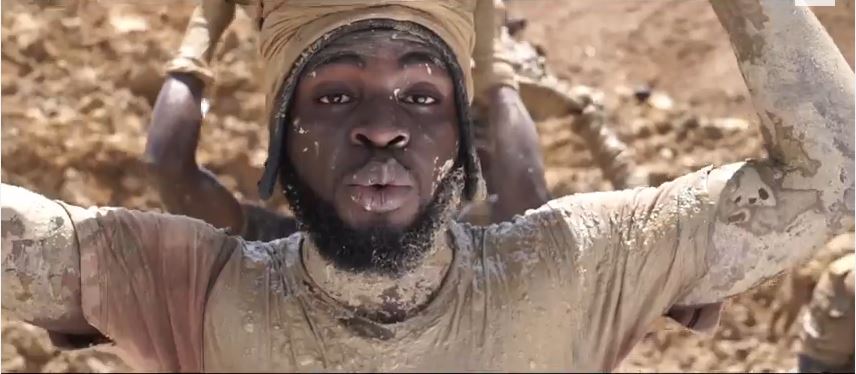
The financial sector also has a role to play. One element that makes mining illegal is the use of heavy machinery in areas where small-scale artisanal sustenance mining is permitted.
“These machineries from small mining groups have to be bought from companies and loans have to be facilitated by the banks,” says Wagner.
“In the very small town of Puerto Maldonado, the capital of Madre de Dios, you can see ten different banks, so yes, the financial institutions do play a role and up until now there has not been much of a focus on their share of the responsibility,” she adds.
Long Term
Legal frameworks
Most experts agree that also there needs to be stronger, more integrated international frameworks to deal with not just conflict minerals but illegal mining in general.
Wagner says there has been work done in the US, EU and Switzerland, where the biggest gold refineries are located, to strengthen efforts to eradicate illegal gold.
However, the Middle East and Asia, huge consumers of gold, are far from any concrete laws to combat the sale of illegal minerals, and Dubai is currently competing with Switzerland to build the biggest gold refinery in the world.
“If this happens we are far away from regulation, we are taking a step back,” says Wagner.
Supporting artisanal miners
As agreed upon by many experts and NGOs, perhaps the best way to combat illegal mining and the sale of illegal gold and other minerals is the formalisation of the small-scale and artisanal mining sector, a recommendation from both Wagner and Insight Crime, or to at least provide these communities with other forms of income.
“Public-private partnerships (PPP) can support legalisation of small, localised operations in partnership for training and regulation, especially on health and safety issues, and protection for smaller scale subsistence miners needs to be present, so that they are not taken advantage of by the larger illegal mining outfits,” says de Bartok.
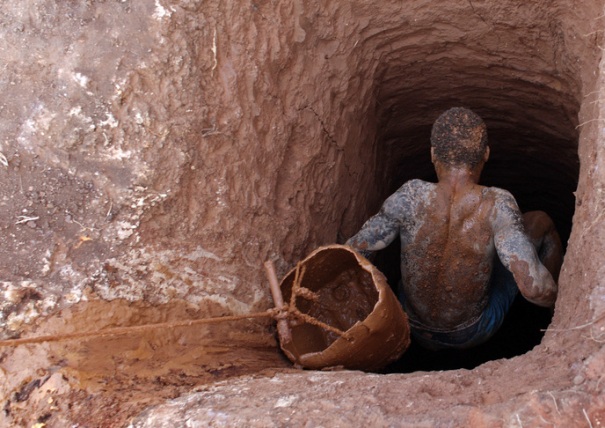 “The tools to combat illegal mining include legislation in import and export countries, international accords, private sector initiatives, and civil society action groups.”
“The tools to combat illegal mining include legislation in import and export countries, international accords, private sector initiatives, and civil society action groups.”
“Whilst it is a heavy initial investment for both company and government in the short-term, the longer-term benefits of a trained localised and regulated workforce will have substantial, lasting, and positive impacts on the community at large – illegal mining is growing at such a rate that the sector will ultimately be forced to operate under military protection, unless we begin to get very real about what’s taking place at what scale,” she adds.
But, for now, illegal mining remains a global challenge of gigantic proportions that will continue to have negative impacts on all stakeholders – local communities, governments, legitimate business and, given the environmental impact, the world – until a unified response is taken.
Most importantly, the long-term approach for me is the key to strategically establish a sustainable mining regime that will promote research, streamlining the industry to include the promotion of lesser known minerals in the country which are mainly industrial minerals and using these minerals to promote growth and as a catalyst for the development of the country in a sustainable manner. This will include Planning and Research to stimulate Strategic Investment in industrial minerals. As mentioned earlier, mining is a good venture which has propelled other countries to real development and we can also achieve it through prudent planning, transparency, research and investment, proper regulation that brings benefits for the miner, the community and the nation at large. Canada has shown the way. Canada is now a world leader in mining and mineral processing. In 2006, products from mining accounted for 17.5%, or Can$ 71.9 billion of the country’s domestic exports. Canada ranks among the top five countries in the production of 14 major minerals and metals. In 2006, Canada ranked first globally in production of potash and uranium; second in nickel and cobalt, third in aluminium, gypsum, magnesium, platinum-group metals, and titanium concentrate; fourth in asbestos and cadmium, and fifth in zinc and molybdenum. Canada is a top-ten producer of gold, silver, copper and lead.

The key to success is the diversification of the mineral and give increased concentration to other industrial minerals which can contribute substantially to our growth.
I have taken the time to investigate other industrial minerals available to us as a country to help us in our development effort and the revelations are overwhelming. I will like to share some of the industrial minerals we have in Ghana and we they are located with you. We can underestimate the importance of this long term strategy to solve the problem of illegal mining which is mainly in the Gold sector.
The most important known industrial minerals include limestone and dolomite, kaolin, clam shells (lime), silica sand, brown clay, feldspar, baryte, quartz and quartzite, dimension stone, common salt, gypsum and ilmenite. Others of commercial value include mica, talc, kyanite, staurolite and rutile.
Limestone and Dolomite in aggregate, building stone, cement and lime manufacture, railroad ballast, fluxes, refractories, fillers, reactive agents, in sulfur dioxide removal, glassmaking processing, abrasives, soil conditioners and the manufacture of paper fillers, plastics, and paints. There is no doubt the commercial importance of this mineral and as of 1996 carbonate resources in Ghana totalled 60,164,500 tonnes of limestone andd 175, 701,420 tonnes of dolomite and dolomitic limestone. By the year 2005, the demand for limestone in Ghana has reached just about 2,366,960 and yet there is demand for limestone in the sub-region. This offers a huge potential for industrialisation. These deposits are in the following areas, Nauli, Buipe, Oterkpolu, Fo river, Bongo Da and Daboya.
Kaolin
Proven and Notable Kaolin resources total an estimated 29 million tonnes. The potential resource across the country is 50million tonnes. In the 1980s about 5,000 tonnes were used in the paint, paper, rubber, plastics, scouring powder, detergent and the pharmaceutical industry. In Ghana, by 2005, the demand for Kaolin was expected to total 13,611 tonnes. Note also that waste from kaolin mining is used in making cement. Ghana has deposit of Kaolin in the following areas in the Aluku area, Akropong (Western Region), Anfoega area (Volta Region), Kibi area (Eastern Region), Akong, Abandze, Atabadzie, (Central Region).
Feldspar.
The largest deposits of feldspar occurs in the cape coast and the saltpond area Central Region and near the cape coast granitic batholith. it is estimated that pegmatite resources are about 2million tonnes, and feldspar are estimated to be 800,000 tonnes. The total estimated feldspar resources are about 1.2 million tonnes. Feldspar resources are currently used mainly in the ceramics and glass industries in Ghana. Demand for feldspar resources in Ghana was 1,369 tonnes in 1995 and had reached 2,602tonnes by 2005.
Mfensi clay for instance is one of the most useful clay types in the Ashanti Region. In view of its importance, a study has been carried out to determine its characteristics to serve as a guide for local pottery ventures and ceramics industries. The clay is suitable for earthenware and stoneware, apart from bricks and tiles, owing to its high refractoriness.
In 2010, under the Mining Sector Support Initiative which was funded by the European Commission, it was discovered that Ghana have valuable deposits of copper, Phosphate, nickel Chromium and Uranium in the country. These are yet to be exploited under a strategic agenda to mine and process for development.
In mineralogy and geology, phosphate refers to a rock or ore containing phosphate ions. Inorganic phosphates are mined to obtain phosphorus for use in agriculture and industry. The largest global producer and exporter of phosphates is Morocco. Ghana has deposits of phosphate in the Volta region in Denu and Daboya in the Northern region.

These are the sure way of creating opportunity to fight the menace of galamsey in the long run. It is a worthy suggestion that large mining companies should consider to adopt and partner seriously with Government in the one-district-one-factory concept. Partnership for investments in alternative mining resources in the country to create jobs for the youth in mining districts will inure to the benefit of the corporate bodies as it will limit the easy overtaking of their concessions. This should create alternative sustainable livelihoods for the areas in which our mining companies operate.
With the above suggestions, we must all agree that under no circumstance should we allow unregulated activities as the case of gold is teaching us. Our response in the short, medium to long term must include a national group made up of government, corporate Ghana, selected civil society organisations and the media to monitor, review and evaluate efforts in overcoming the challenges and tackling the menace. Responsive measures must be taken to counter further challenges.
Mining is a good sector that can help as a catalyst for propelling development in a sustainable manner. What we need is a strategic plan to process raw minerals in our industrialisation effort. We need to diversify the exploration and exploitation of other commercial and available resources with industrialisation still in mind to create sustainable wealth for our people and government must lead the way.
To conclude, I will borrow from Charles E Wilson and add that Ghana’s future is still before us. Our land is a vast storehouse of mineral and agricultural wealth awaiting further development for the benefit of mankind. Our potentialities are magnificent. We have no excuse to fail.
I thank you for the opportunity and the kind attention
#StopGalamsey
This post has already been read 2301 times!


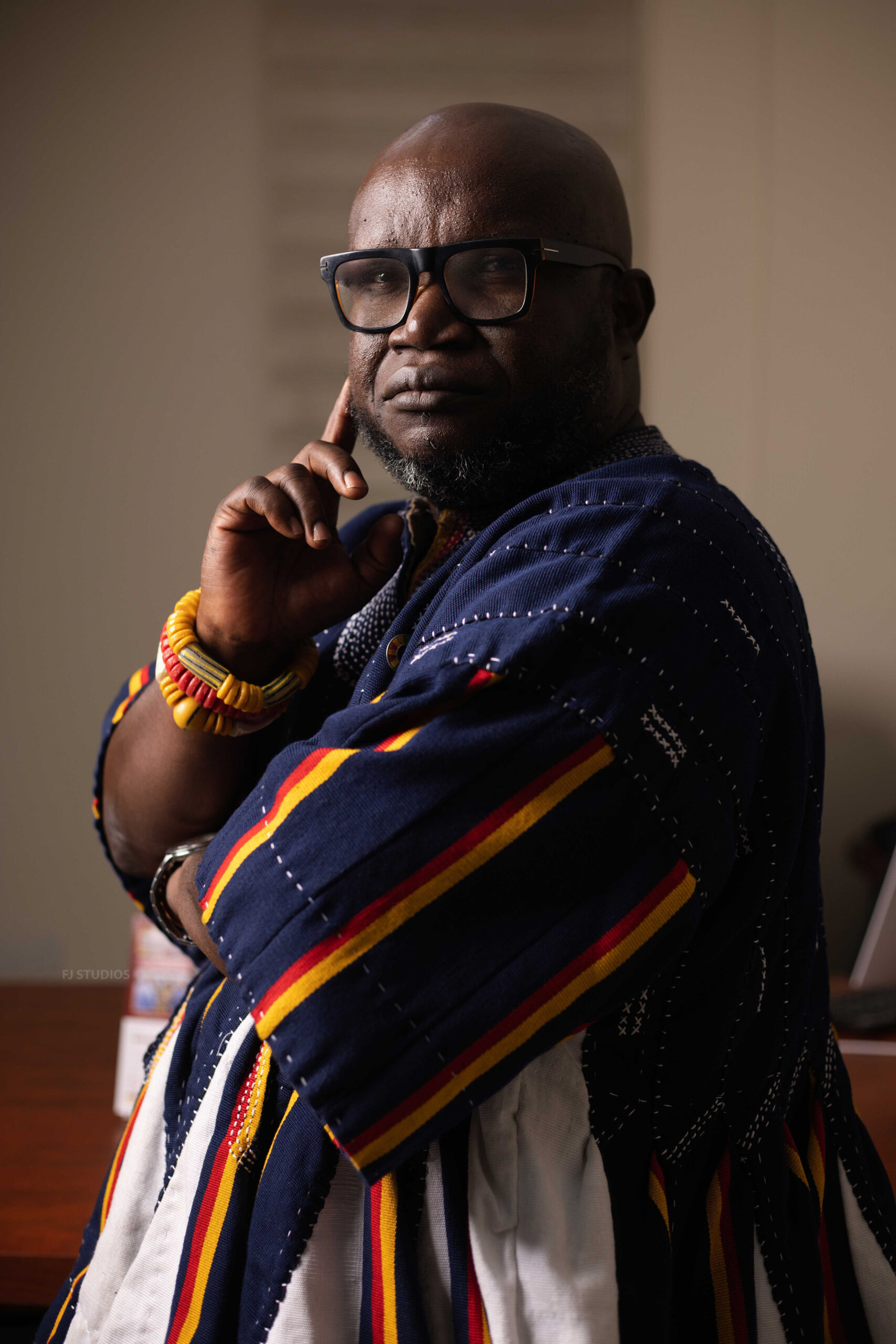
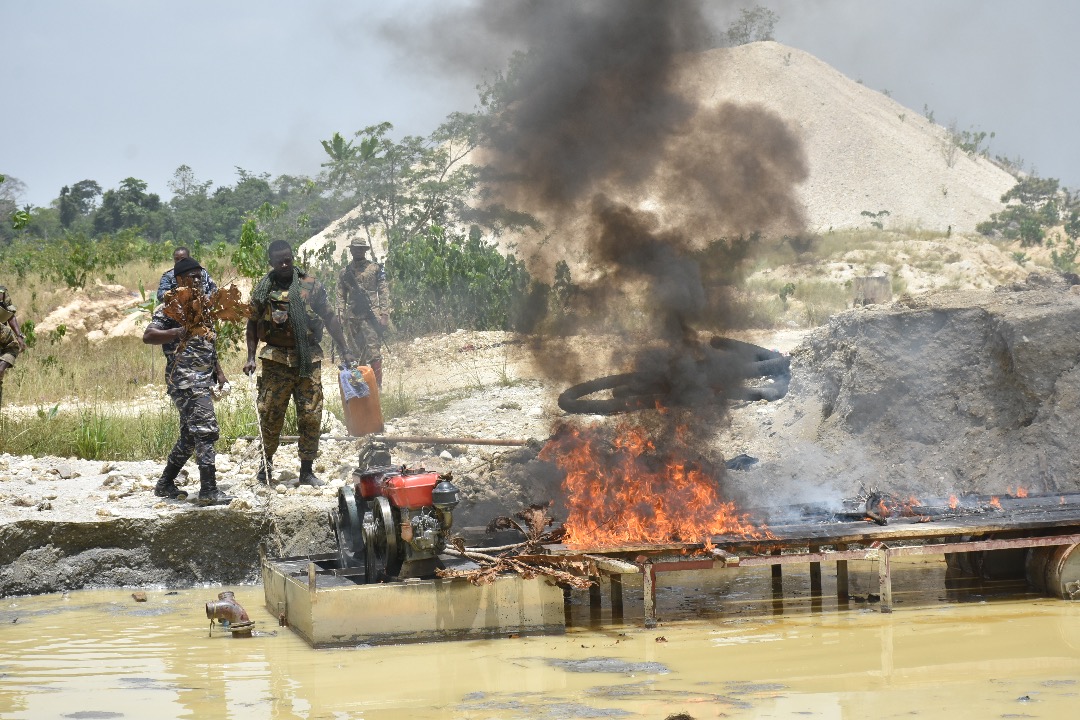
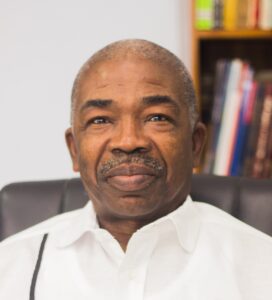


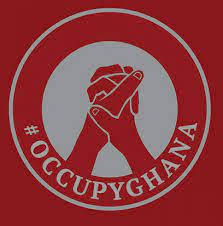



Post Comment